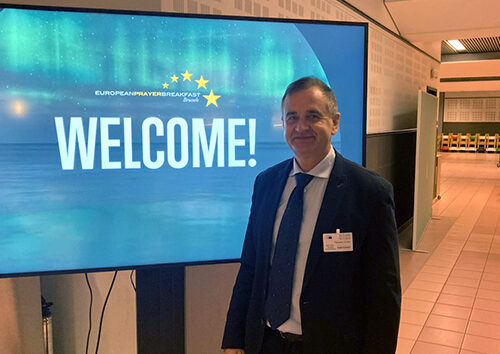15 February 2011 Binfield, United Kingdom [Helen Pearson, BUC NEWS] The cryptic title, ‘Many Adventisms?’ coaxed about sixty people to leave the comfort of their armchairs on Tuesday evening, 15 February for Newbold’s first Diversity Lecture of 2011.
Dr. David Trim, a founder member of Newbold’s Diversity planning team and a former student and teacher at the College, is a keen student of Adventist history. Next month he will move to the United States having recently taken up a new appointment as Director of Archives and Statistics at the Seventh-day Adventist World Headquarters. From the outset of his lecture he stressed that the question of diversity and unity in a Seventh-day Adventist context is not new. From their earliest days, Adventists have always argued vigorously. Currently, different members are discussing matters like inspiration, sexuality, creation and ordination – issues that have a significant capacity to disunite them.
The early part of the lecture was devoted to a discussion of the Biblical model of unity. Dr. Trim asserted the importance of unity described in the prayer of Christ and exemplified in the Early Church whose unity and sense of community was crucial to its growth. He moved on to describe the opposition to organisation to create unity expressed by the first Adventist leaders and their complete u-turn from their early belief that “the first step of apostasy is to get up a creed… and the second is to make that creed a test of fellowship…” Once Conferences were organised in order to facilitate the process of evangelism, Adventists, led by Ellen White, “deliberately rejected an authoritarian, hierarchical structure of organisation and governance. Instead, they adopted a flexible structure that devolved much responsibility and authority to local and regional levels.” All this was an expression of their commitment “to avoid becoming Babylon.”
Eventually, Dr. Trim’s historical journey brought him to the present day. He suggested that the church contains multiple camps on issues like morality, theology, hermeneutics, relationships to the wider world and behavioural patterns – and within those camps shades of opinion varying through all shades of grey – not just black and white. He suggested that the terms, ‘liberal’ and ‘conservative’ are too polarising to describe the diversity in Adventism. “We need a more richly textured conceptual framework,” he said.
Dr. Trim proceeded to his final question: “What are the limits of tolerable diversity?” For answers he referred to Ellen White’s 1890 description of four ‘landmark doctrines’: the three angels’ messages of Revelation 14, the work of Jesus Christ in the heavenly sanctuary, the seventh-day Sabbath and the non-immortality of the soul. “It was the loss of only these which God’s people should, with most determined zeal, resist.” Dr. Trim observed, “So many of the things… that cause bitter controversy… are matters about which we should always cordially agree to disagree.” ‘Cordially’ was the key word here. Dr. Trim concluded by suggesting that there are far too many people keen to assume the prophetic mantle and tell their brothers and sisters that they are wrong. Instead he urged the importance of unity among Adventists and the need to engage in positive dialogue, bearing and forbearing as they continue to search together for present truth. Lecture available on Vimeo. [tedNEWS]
tedNEWS Staff: Miroslav Pujic, director; Deana Stojkovic, editor
119 St Peter’s Street, St Albans, Herts, AL1 3EY, England
E-mail: [email protected]
Website: www.ted-adventist.org
tedNEWS is an information bulletin issued by the communication department of the Seventh-day Adventist Church in the Trans-European Division.
You are free to re-print any portion of the bulletin without need for special permission. However, we kindly request that you identify tedNEWS whenever you publish these materials.


